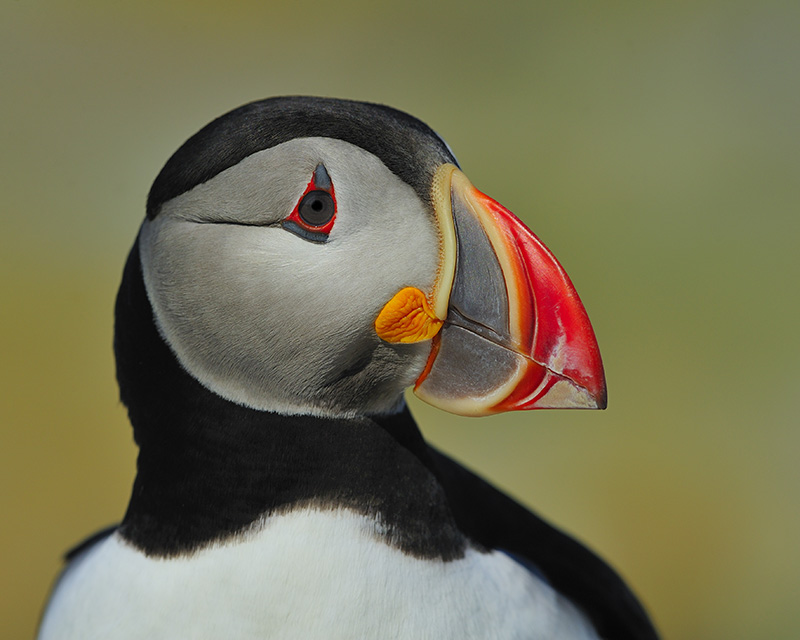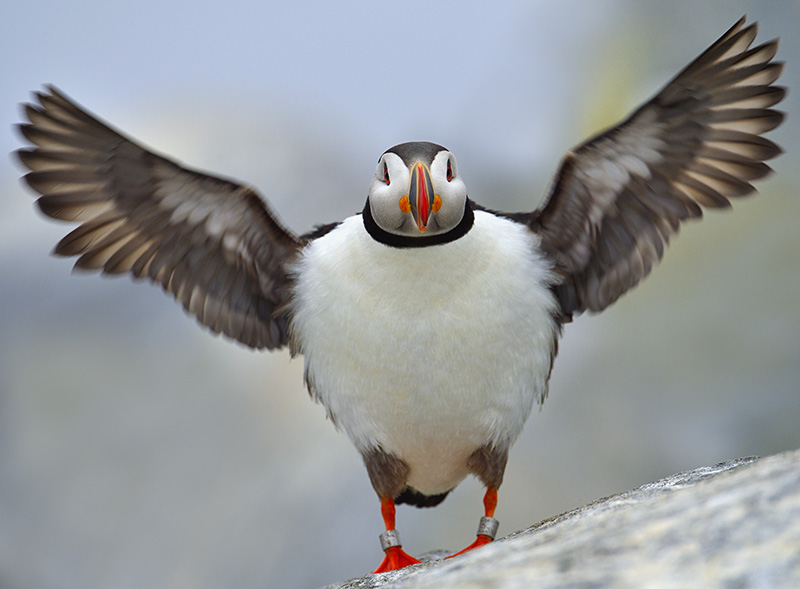When it comes to birds, sometimes it feels like penguins always steal the show. On all of our voyages, birdlife plays an important role and we love spotting them with our Nikon binoculars (supplied for all guests) and chatting with our onboard Ornithologists. Any true ‘birder’ will have their favourite – from the Adelie penguins of Antarctica to the Resplendent Quetzal of Costa Rica, the black-necked swan of Chile to the black guillemot of the Canadian Arctic; there’s no shortage of interesting and beautiful birds on any One Ocean Expeditions voyage.
One of the most fun and fascinating birds that we often see is the Atlantic Puffin. Nicknamed the ‘sea parrot’, the Atlantic Puffin spends most of its life at sea. They enjoy resting on the waves when they are not swimming or flying. Also sometimes referred to as ‘Penguin of the North’ or even ‘Clown of the Sea’, they are identifiable by their brightly coloured beaks, however, their beaks can change colour throughout the year. While in Spring it may be an incredible shade of orange, other times it can be a dull grey. It’s thought the bright colour helps puffins to assess potential mates.

Their species name is ‘Fratercula’ which comes from the Latin ‘little brother’. It’s believed the name came from the bird’s black and white feathers, which resemble the robes that monks once wore. There are four species of puffins, three of which are barely distinguishable from each other.
Puffins are amazing swimmers. They use their webbed feet as a rudder and can dive as deep as 60m under water. They can speed up to 88km an hour in the air and flap their wings up to 400 times a minute, however, this is more of a case of them being poor flyers. They can have trouble landing and often crash into the water or on land, and you don’t want to get in one’s way as it’s taking off, as they require a bit of a running start to get airborne!

Carnivorous birds, puffins live off of small fish such as herring, hake and sand eels. Due to overfishing, populations are in decline due to the shortage of food. They are able to hold several small fish in their bills at a time.
They like to build their nests on rocky cliff tops, which they line with feathers and grass. After a female lays a single egg, puffins do a great job at co-parenting as both the male and female share incubating and feeding their chicks.
You can discover Atlantic Puffins and see them for yourself on any of our voyages to Canada’s East Coast, Scotland, Ireland, Iceland and the Faroe Islands, and sometimes even in the Canadian Arctic and Greenland.
For more information please contact your preferred travel agent or speak to one of our sales team here.















